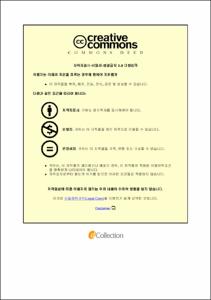최근 7년간 부산지역 호흡기알레르기 환자의 흡입 알레르겐 감작률 변화: 단일기관 연구
- Alternative Title
- Changes of inhalant allergen sensitization in allergic respiratory patients in Busan over 7 years : a single center study
- Abstract
- Background: The prevalence of allergic disease is increasing across the world. Allergic diseases are associated with allergen sensitization. Determination of culprit allergen is important for the diagnosis and management of allergic diseases. There are many differences in sensitization rates of common inhalant allergens between the countries and the regions.
Objective: This study was aimed to investigate on the prevalence of sensitization against inhalant allergens and the changes of sensitization rate in patients visiting the university hospital in Busan, over 7 years.
Method: Skin prick test was performed with 29 common inhalant allergens on 1,085 patients in 2010, 2013, 2016 at Inje-university Haeundae Paik hospital. Inhalant allergens were used for tests including house dust mites, fungi, tree pollen, grasses, weed, animal hair, and cockroach. Reading method was based on the rates of allergen/histamine weal response. Higher ratios than 1 were regarded as positive results.
Result: The number of positive responders to more than one allergen out of 1,085 patients was 135 people (56.7%) in 2010, 220 people (57.3%) in 2013, and 272 people (58.7%) in 2016. During the study periods, the most common sensitizing allergen was Dermatophagoides farinae (40.0%), followed by Dermatophagoides pteronyssinus (39.0%), Alder (18.3%) and Birch pollens (17.3%). The sensitization rate of cat was increased significantly by 10.1% in 2010, 13.8% in 2013, and 17.9% in 2016(p<0.01), respectively. Furthermore, according to the ages, the rate of sensitization of cat allergen was significantly increased in their 30s(p<0.05), respectively. Mugwort was decreased significantly by 12.6% in 2010, 11.2% in 2013, 7.8% in 2016(p<0.05), respectively.
Conclusion: The most common sensitizing allergen is found to be the house dust mite, in Busan. There was no changes prevalence of atopy, tree pollen, grasses over 7 years. However, the sensitization rate of cat was significantly increased. On the other hand, sensitization rate of mugwort was significantly decreased.
- Issued Date
- 2018
- Awarded Date
- 2018.2
- Type
- Dissertation
- Publisher
- 부경대학교
- Alternative Author(s)
- Cho Long Kang
- Affiliation
- 부경대학교 산업대학원
- Department
- 산업대학원 산업미생물학과
- Advisor
- 김군도
- Table Of Contents
- 목차 i
List of Table ii
List of Figures ⅲ
영문초록 ⅳ
I. 서론 1
II. 연구대상 및 방법 4
1.1. 연구대상 4
1.2. 연구방법 5
1.3. 통계분석 9
III. 연구결과 10
1.1. 대상군의 특징 10
1.2. 아토피 유병율 12
1.3. 주요 알레르겐의 감작률 변화 15
1.4. 실내 알레르겐의 감작률 변화 18
1.5. 화분 알레르겐의 감작률 변화 21
1.6. 연령에 따른주요 알레르겐 감작률 변화 25
Ⅳ. 고찰 28
Ⅴ. 요약 34
VI. 참고문헌 35
- Degree
- Master
- Files in This Item:
-
-
Download
 최근 7년간 부산지역 호흡기알레르기 환자의 흡입 알레르겐 감작률 변화: 단일기관 연구.pdf
기타 데이터 / 688.33 kB / Adobe PDF
최근 7년간 부산지역 호흡기알레르기 환자의 흡입 알레르겐 감작률 변화: 단일기관 연구.pdf
기타 데이터 / 688.33 kB / Adobe PDF
-
Items in Repository are protected by copyright, with all rights reserved, unless otherwise indicated.